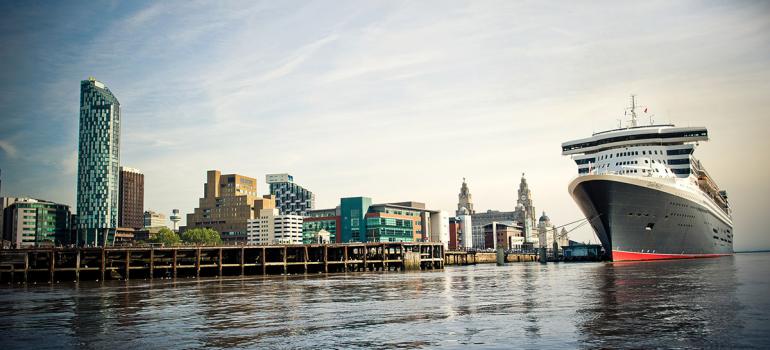17 November 2017
Liverpool City Council has submitted a planning application for a new £50m Cruise Terminal Facility on the River Mersey.
The council is looking to create an “international standard”, permanent facility which would enable the city to welcome the world’s biggest cruise ships.
The application includes the controlled removal of Princes Jetty and the construction of a new terminal set within a statement building, based on a new suspended deck structure in the river.
This year Liverpool welcomed more than 60 vessels, with 120,000 passengers and crew, but the council wants to capitalise on the cruise boom by creating a state of the art passenger and baggage facility, complete with passport control, lounge, café, toilets, taxi rank and vehicle pick up point, to cater for Liverpool’s growing appeal in the cruise industry. The current terminal generates more than £7m a year to the city’s economy.
The application is expected to be heard by the council’s Planning Committee in January 2018. If approved, site preparation at Princes Dock, in Liverpool Waters, is expected to start in Spring 2018.
The council is currently inviting tenders to select a Design and Build Contractor to construct the facility with a closing date for submissions of Thursday, 14 December. This is a two–stage contract award basis, with the first stage to develop the design and confirm the construction costs with appointed consultancy firm Ramboll UK. The first stage contract is expected to be awarded in March 2018.
Tenders are also being assessed for the site investigation works needed at the Princes Jetty site, which has been gifted to the council by Peel, and it is expected these works will also start in January 2018.
The council is also in the process of promoting a Harbour Revision Order through the Harbour Authority to construct the new terminal in the River Mersey.
Further planning applications could potentially include supplemental projects with a new 200 room hotel and 1,700+ multi-storey car park to enhance the city’s capabilities in handling the next generation of turnaround cruises, which can carry up to 3,600 passengers.
Mayor of Liverpool, Joe Anderson, said: “A new cruise facility is one of the city’s most important regeneration projects of this decade and is vital to growing Liverpool’s tourism economy.”
We want to provide the next generation of super liners and their passengers a world class welcome with a five star experience. A new cruise facility will also be a huge boost to our plans to regenerate the North Liverpool docklands and create thousands of new jobs which is why we’re putting together the best team of experts to ensure we build this facility to the very highest standards.”
Although the proposed multi-storey car park has been earmarked for the new cruise facility, the council is reviewing locations north of Leeds Street so it could also support initiatives around the Ten Streets creativity district.
The council, which recently held a two day public consultation on the scheme, is also investing a further £32m in upgrading the A565 to support the new cruise facility and north docklands and is also gearing up to create a £20m link road to extend Leeds Street to the waterfront to support a new £30m Isle of Man Ferry terminal.
Relocating the cruise terminal will also enable the council to remodel The Strand by removing junctions, such as the one servicing the current facility, that stem the flow of traffic along the key waterfront route.
Liverpool City Council, which is currently overseeing £14bn worth of regeneration projects, is also carrying out further maritime and infrastructure investigations, environmental impact assessments and surveys and is working closely with Peel Land and Property as the gifted Princes Jetty sits within its £5.5bn Liverpool Waters scheme.
Ian Pollitt, Assistant Project Director at Liverpool Waters, said: “We are delighted at the progress the city council is making with the new terminal proposals. We are working very closely with them and our other partners to progress the development and this planning applications is a major milestone in that process.”


